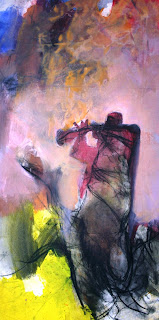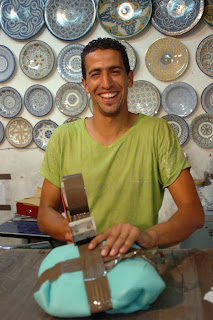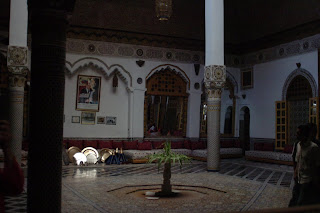
Fes is well known for their well-made, handmade, beautiful ceramics. First, you have the clay. The chunks on the left are the dry clay, the pool on the right is where the dry clay is being reconstituted into moist workable clay.

The are master potters who do nothing but make ceramic bowls, plates, cups, tajines, and much more. Note he's working on a kick wheel, no motor.

Then the works are bisque fired in a kiln. This one used wood and sawdust and fire fodder.

After the first firing, the works are then handpainted with a variety of designs, in either the traditional blue and white or in various colors.
The work is then fired once more, and the glaze colors darken and become shiny.
To buy, you must bargain... and I tell you, it was really stressful, hard work having to haggle with the young salesman (below), I mean. Really SUCH a chore to bargain with this cutie to buy mom's display plate. Seriously, the things I do for you mom! :-)
























